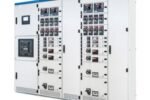As Middle Eastern and North African (MENA) countries have grown and their built environments continued to expand and develop with a particular focus on smart cities, CBRE has seen strong expansion in the region’s data centre market.
Although historically national operators have largely dominated the market, we are seeing increased levels of investment and interest from international operators who are looking to capitalise on the region’s growing need for data processing and storage.
Whilst on a broader level we have seen strong levels of investment in recent years throughout many MENA countries, Egypt, Saudi Arabia and the UAE are now registering the vast majority of interest from international operators. These three countries’ strong fundamentals are driving activity levels, along with their marked improvements in ease of doing business and data protections laws and also in their subsea cable connectivity.
Today, the Data Centre capacity of these three markets is estimated to total around 336 MW. As these countries continue to develop, it is estimated that this is expected to grow to 707 MW by 2025, with Saudi Arabia and the UAE expected to add the bulk of the additional capacity. This forecast growth will mean that from a real estate perspective, data centres will become a core asset class in the alternative real estate market sector in all three of these countries, where we expect that future activity will largely be led by join-venture partnerships.
Jonathan Briggs, Head of Industrial & Logistics at CBRE in Dubai, comments: “Today, the clear upfront delivery of power and the potential ramp up and costs to the data centre operator are becoming increasingly necessary earlier on in the land/site acquisition process, and considering the current pipeline of projects in the Middle East region, we welcome any increase in power capacity across these key markets.”
Taimur Khan, Head of Research – MENA at CBRE in Dubai, comments: “Looking ahead, we expect a more supportive set of regulatory environments to develop in these markets. We envisage that this will take place in both the telecom and infrastructure segments. This will help further drive interest from international operators and also from developers, which in the long run will grow the sector’s real estate asset pool, where it will become a notable asset class globally.”











